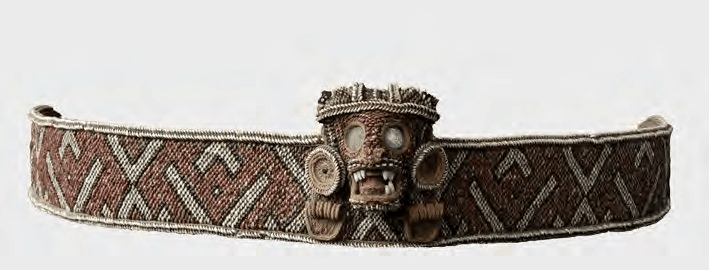Huellas vivas del indocubano by Jose Antonio Garcia Molina, Mercedes Garrido Mazorra and Daisy Fariñas Gutierrez presents a strong case for Taino retentions in the ceremonia del cordón in Cuban Espiritismo. Basing their theory on ethnographic observation, historical sources and the Cuban and Caribbean anthropological tradition, the authors argue that the specific type of Espiritisma ceremony described in the book, in Cuba's Oriente, is based on the Taino areito. Since historical sources attest to indigenous survival in that part of the island, and ethnographic analyses of campesino religion, spirituality, material culture, genetics, folklore, and popular healing demonstrate a palpable indigenous legacy, one can see how the Taino areito was adapted into a particularly Cuban form of Espiritismo. Since the worldview of Espiritismo overlaps with Taino or indigenous Caribbean beliefs, as well as those of Afro-Cubans, Taino ritual healing customs and the areito as a healing process were adaptable to the ceremonia del cordón that developed in eastern Cuba by the 20th century.
What is astonishing about this study is the wealth of details attesting to indigenous survival and retentions in Cuba's east. Perhaps something similar could be found for Indiera in Puerto Rico and, perhaps, the Dominican Southwest? Either way, it is remarkable the degree to which some indigenous customs and traditions persisted, besides the obvious ones related to material culture. For instance, the Cuban healing practice derived from the behiques, of sucking on the patient, was practiced in Cuba as recently as the 1930s. Matrilineal inheritance was also practiced by some families of probable Indian descent. In addition, veneration of the Sun, belief in the transformation into animals, and characteristics of mediums and guides in Cuban Espiritismo seem to owe something to the behiques of the Taino. While sometimes the authors may be wrong about the Amerindian origin or root of this or that Cuban custom or ritual practice, overall their case is strong for a significant legacy to Cuba's first, primordial, root. Indian survivals even surface in Cuban Espiritismo with a commission for Indians and commemoration of Guama. Cuban transculturation makes it sometimes difficult to distinguish all the components in the national stew, but the indigenous ingredients are very clear in Cuba's eastern provinces.
While our understanding of the areito saw it as less of a healing practice than a community-wide ceremony for celebrating, remembering the past, and commemorating the accomplishments of caciques. However, the specific type of singing, dancing in a circle while holding hands, and absence of more typical African influences suggests that the Cuban Espiritista ritual might be the closest glimpse we have of what the areito looked like in the distant past. We know from Spanish sources that the areito was still practiced by Tainos in Hispaniola several decades after the Spanish conquest. In Cuba and Puerto Rico, where documented indigenous communities also survived, one can assume the areito was practiced there well into the colonial era. Agustin Stahl even suggested that elements of the areito may be found in the country dancing of the Puerto Rican peasant. However, nothing from the rural or ceremonial dances of today's Puerto Rico seems to bear such a clear or plausible indigenous origin.

No comments:
Post a Comment